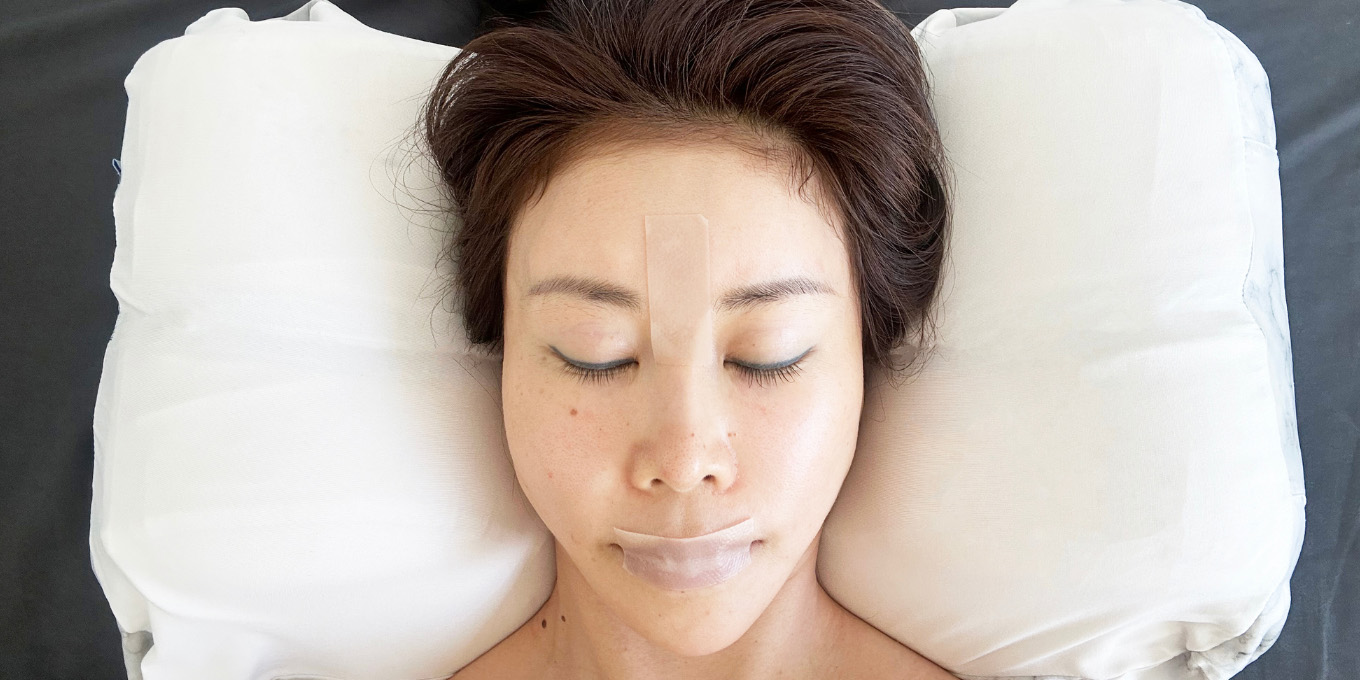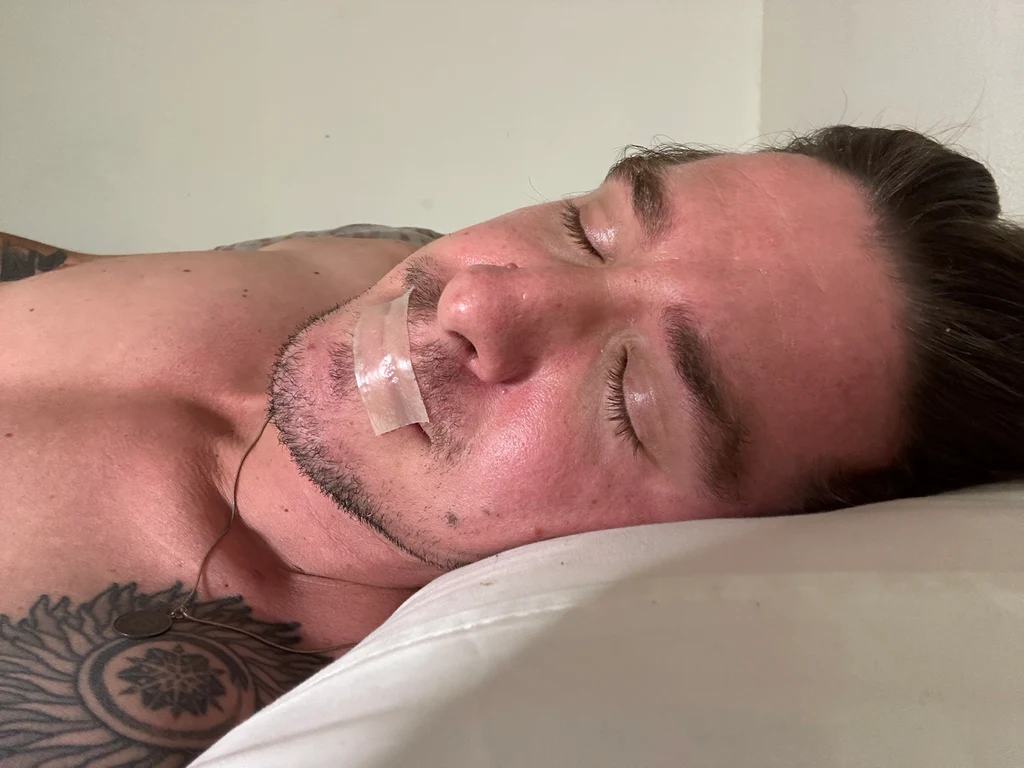Breathing is the cornerstone of life, yet many of us overlook its profound impact on our well-being. In yoga, where breath (pranayama) is a central practice, nose breathing takes center stage as a transformative tool for enhancing physical, mental, and emotional health. By consciously breathing through the nose during yoga—and even adopting practices like mouth taping at night to reinforce this habit—you can unlock a wealth of benefits for your body, brain, and nervous system. In this blog, we’ll explore why nose breathing is essential in yoga, how it optimizes your health, and how mouth taping can support this practice, all while ensuring the content is SEO-optimized to reach and inspire a wide audience.

Why Nose Breathing Matters in Yoga
Yoga is more than just physical postures; it’s a holistic practice that integrates breath, movement, and mindfulness. Nose breathing is fundamental to pranayama, the yogic art of breath control, as it regulates energy flow, calms the mind, and enhances physical performance. Unlike mouth breathing, which can be shallow and stress-inducing, nose breathing offers unique physiological advantages that align perfectly with yoga’s goals of balance and harmony.
1. Optimizes Oxygen Delivery for the Body
Nose breathing filters, warms, and humidifies the air before it reaches your lungs, ensuring optimal oxygen absorption. The nasal passages produce nitric oxide, a molecule that dilates blood vessels, improving circulation and oxygen delivery to muscles and organs. In yoga, this translates to better stamina during asanas (postures) and improved recovery post-practice. Studies suggest nasal breathing increases oxygen uptake by up to 20% compared to mouth breathing, making it a game-changer for yogis aiming to deepen their practice.
2. Calms the Nervous System
Nose breathing activates the parasympathetic nervous system, the “rest and digest” mode that counteracts stress. During yoga, slow, controlled nasal breaths lower cortisol levels, reduce heart rate, and promote relaxation. Techniques like Ujjayi breath (a nasal breathing practice) create a soothing sound that anchors the mind, fostering mindfulness and reducing anxiety. This nervous system regulation is especially beneficial for those practicing restorative or meditative yoga styles, such as Yin or Hatha.
3. Enhances Brain Function
The brain thrives on steady oxygen flow and a calm nervous system, both of which nose breathing supports. By stabilizing carbon dioxide levels in the blood, nasal breathing improves cerebral blood flow, enhancing focus, clarity, and emotional resilience. In yoga, this mental clarity is crucial for maintaining drishti (focused gaze) and staying present during meditation or challenging poses. Research indicates that nasal breathing can improve cognitive performance and reduce symptoms of brain fog, making it a powerful tool for yogis seeking mental sharpness.
4. Improves Respiratory Health
Nose breathing strengthens the diaphragm and encourages deeper, more efficient breathing patterns. This is particularly important in yoga, where breath synchronizes with movement to create flow (as in Vinyasa) or stillness (as in restorative poses). By filtering allergens and pathogens, the nasal passages also protect the lungs, reducing the risk of respiratory issues—a key benefit for yogis practicing in varied environments, from studios to outdoor settings.

Mouth Taping at Night: A Game-Changer for Nose Breathing
While yoga trains us to breathe through the nose during practice, many people revert to mouth breathing during sleep, which can disrupt health benefits. Mouth taping—a simple practice of gently taping the lips closed at night—encourages consistent nose breathing, amplifying its effects on the body, brain, and nervous system. Here’s how it works and why it’s worth trying.
What is Mouth Taping?
Mouth taping involves using a small piece of hypoallergenic, breathable tape (like micropore tape) to gently keep the lips closed during sleep, promoting nasal breathing. This practice has gained traction in wellness communities, backed by anecdotal evidence and emerging research.
Benefits of Mouth Taping for Nose Breathing
1. Improves Sleep Quality for Better Yoga Performance Mouth breathing during sleep can lead to snoring, sleep apnea, or fragmented sleep, leaving you fatigued for your yoga practice. Nasal breathing, encouraged by mouth taping, promotes deeper, more restorative sleep by maintaining optimal oxygen and carbon dioxide balance. Better sleep enhances energy levels, focus, and flexibility, all of which elevate your yoga sessions.
2. Boosts Brain Health Consistent nasal breathing during sleep increases nitric oxide production, improving blood flow to the brain. This supports cognitive function, memory, and emotional regulation—key for maintaining mindfulness in yoga. A 2023 study found that nasal breathing during sleep improved REM sleep cycles, which are critical for brain repair and creativity.
3. Regulates the Nervous System Mouth breathing at night can trigger the sympathetic nervous system (fight-or-flight response), leading to stress and poor recovery. Mouth taping promotes parasympathetic dominance, calming the nervous system and reducing stress hormones. This aligns perfectly with yoga’s goal of fostering inner peace and resilience, both on and off the mat.
4. Supports Physical Health By preventing dry mouth and reducing the risk of oral health issues (like gum disease or tooth decay), mouth taping supports overall wellness. It also strengthens respiratory muscles, which can enhance your ability to perform advanced pranayama techniques, such as Kapalbhati or Bhastrika, with greater ease and control.

• Choose the Right Tape: Use hypoallergenic, porous tape designed for skin (e.g., 3M Micropore or surgical tape).
• Start Small: Begin with a small piece of tape placed vertically over the center of your lips to get accustomed to the sensation.
• Test During the Day: Practice nose breathing with tape for 10-15 minutes during the day to ensure comfort.
• Consult a Professional: If you have sleep apnea, nasal congestion, or respiratory issues, consult a doctor before trying mouth taping.
• Combine with Yoga: Pair mouth taping with evening pranayama practices, like Nadi Shodhana (alternate nostril breathing), to reinforce nasal breathing habits.

Nose breathing is a cornerstone of yoga, offering profound benefits for the body, brain, and nervous system. By enhancing oxygen delivery, calming the nervous system, and sharpening mental clarity, it elevates your yoga practice and overall well-being. Mouth taping at night reinforces this habit, improving sleep quality, brain health, and physical resilience—key pillars for a vibrant life. Whether you’re a seasoned yogi or just starting your journey, embracing nose breathing both on the mat and during sleep can transform your health and deepen your practice.
Ready to take your yoga and wellness to the next level? Try incorporating nose breathing into your daily practice and experiment with mouth taping for better sleep. Share your experiences in the comments below, and let’s inspire each other to breathe better and live fully!
Note: Always consult a healthcare professional before making significant changes to your breathing or sleep habits, especially if you have pre-existing conditions.